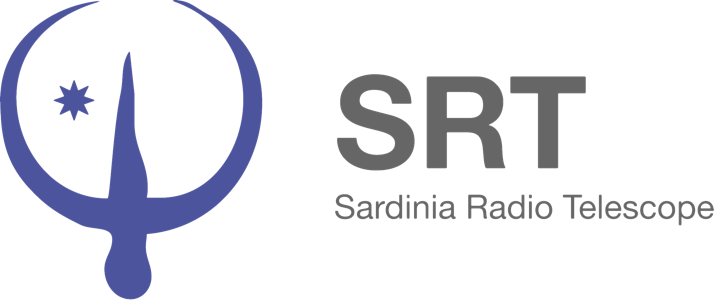News
The first important SRT observation
![The SgrA region The region SgrA near the Galactic center, with the source SgrA* [Credits: NASA's Chandra X-Ray Observatory]](/media/uploads/sgra.jpg)
The Sardinia Radio Telescope (SRT) has just started off with an important success, seizing the opportunity to observe the extreme physical processes that operate in a "magnetar", a subclass of neutron stars having magnetic fields more than 100 times higher than those typically observed in normal pulsars (in themselves exceptionally high).
PSR J1745-2900 is a new magnetar recently observed by the Swift satellite as an X-ray flare coming from the direction of the source Sagittarius A * (SgrA *) in the galactic center, and then confirmed as a magnetar by the NuSTAR satellite.
On Monday, 6th May the magnetar PSR J1745-2900 was detected in the radio frequency band by the SRT, with the same pulse period as detected in the X-ray band (T = 3.76 sec). The detection was performed at 5.30 am by a group of local astronomers and technicians of the INAF-OAC (National Institute for Astrophysics - Cagliari Astronomical Observatory), engaged in the scientific validation process of the SRT instrumentation; it was published as an A-TEL (a short message that informs the astronomical research community of an important discovery) on behalf of the entire Group of Scientific Validation and Commissioning of the SRT.
"It was a great team work" - says Nichi D'Amico, director of the SRT project - "realized by both those who made the observations at dawn, with not yet adequate logistics, and those who had the patience to make filtering operations on the data, necessary to be sure about the detection of the signal we were looking for. "
The observation (performed with the C-band receiver at the central frequency of 7.30 GHz, with a bandwidth of 730 MHz and a sampling interval of 40ms) has been crucial to confirm the radio counterpart of the magnetar PSR J1745-2900 .
In fact a first observation of PSR J1745-2900 had been performed some days ago almost simultaneously by the Parkes radio telescope and the Green Bank Telescope at low radio frequencies. The observations, however, indicated a dispersion measure almost equal to zero (typical of interfering signals of terrestrial origin). A second possible detection had been later performed by the Effelsberg radio telescope at a frequency of 8 GHz: the detection seemed real but, as stated by the authors themselves in their A-TEL, one could not exclude the possibility that the signal was caused by a radio interference of terrestrial origin.
The detection performed with the SRT (shown below), a narrow and bright signal (with a high signal to noise ratio, of about 14), is therefore of fundamental importance. The discovery of the PSR J1745-2900 pulse, besides showing the great observation skills of the SRT already in its validation phase, and thus its future potential, opens new scenarios for understanding structure and dynamics of our Galaxy. The region in which it was found, SgrA*, is in fact a significant radio source, very bright and compact, located in the center of the Milky Way and likely home of a supermassive black hole.
For example, if it were demonstrated that this magnetar orbits around the black hole, that would be of great interest for the astrophysicists.
![Pulse of the magnetar PSR J1745-290 observed with the SRT Pulse of the magnetar PSR J1745-2900 observed by the SRT at the frequency of 7.30 GHz [Credits: Buttu, D'Amico, Egron, Iacolina, Marongiu, Migoni, Pellizzoni, Poppi, Possenti, on behalf of the Scientific Validation team and Commissioning of the SRT]](/media/uploads/srt_magnetar_pulse.jpg)
